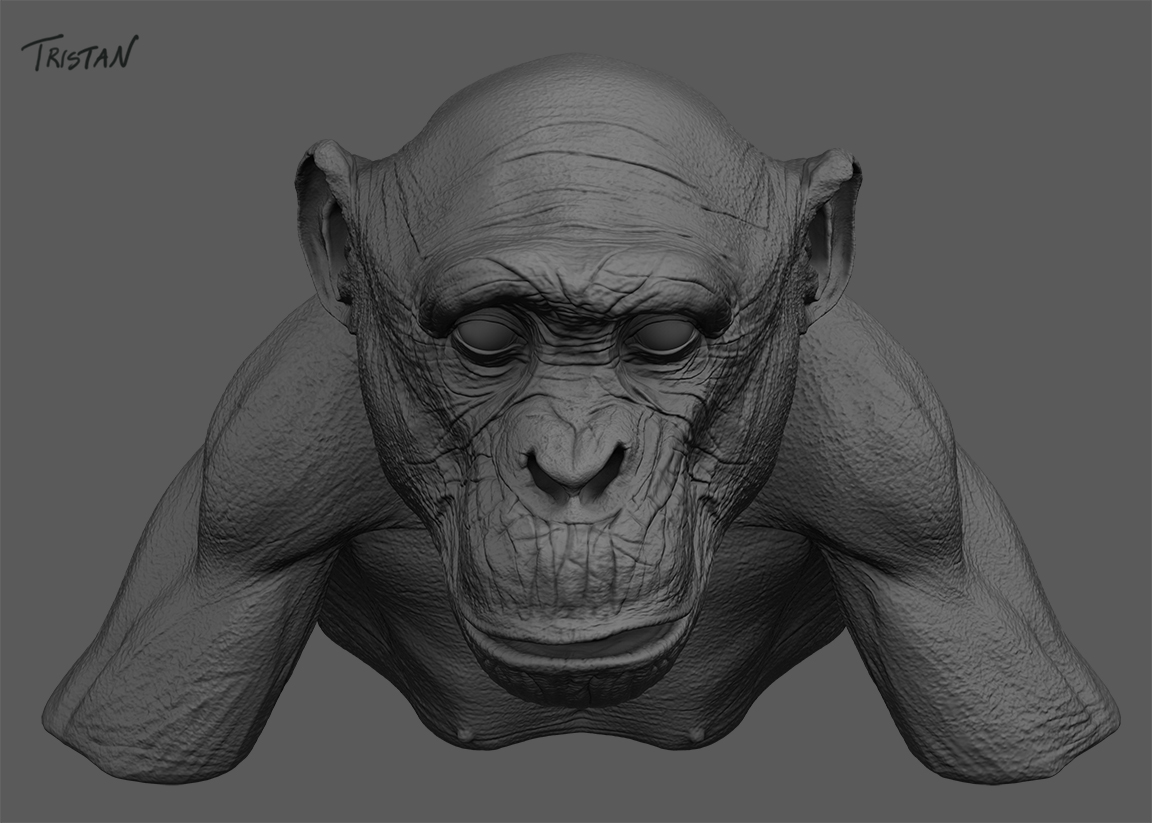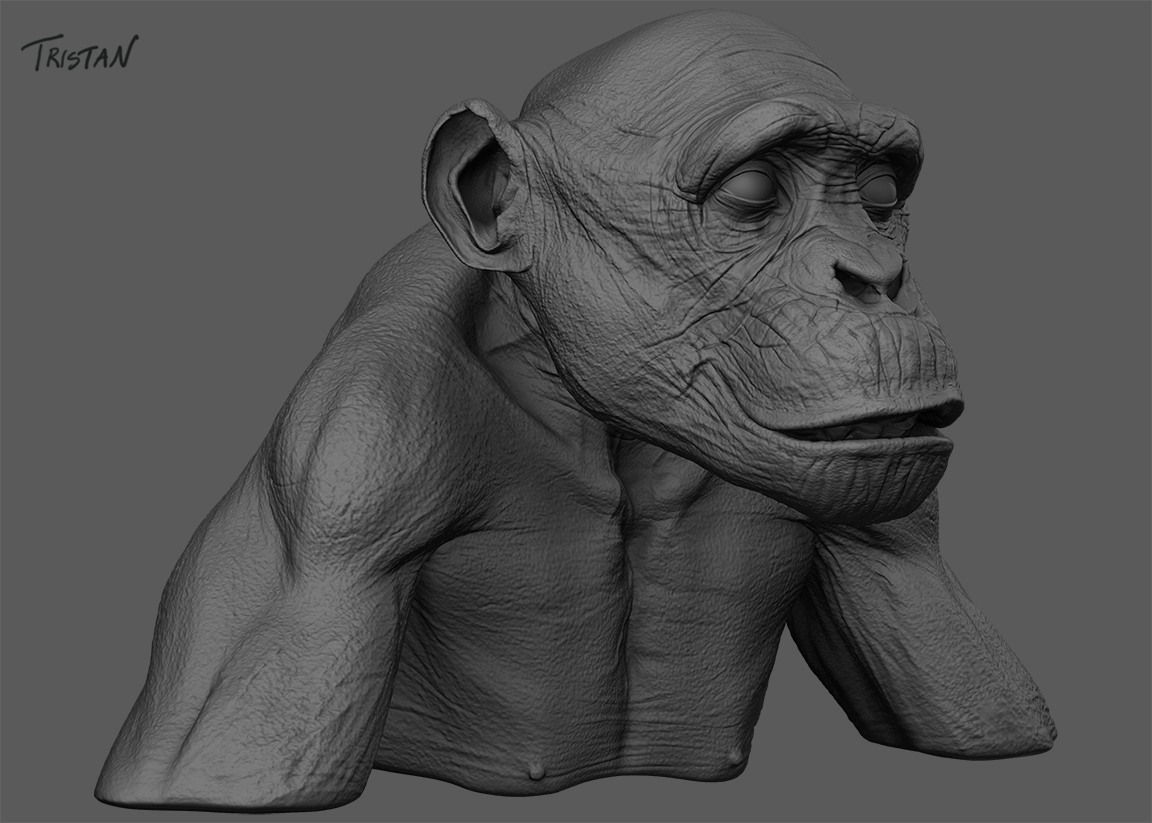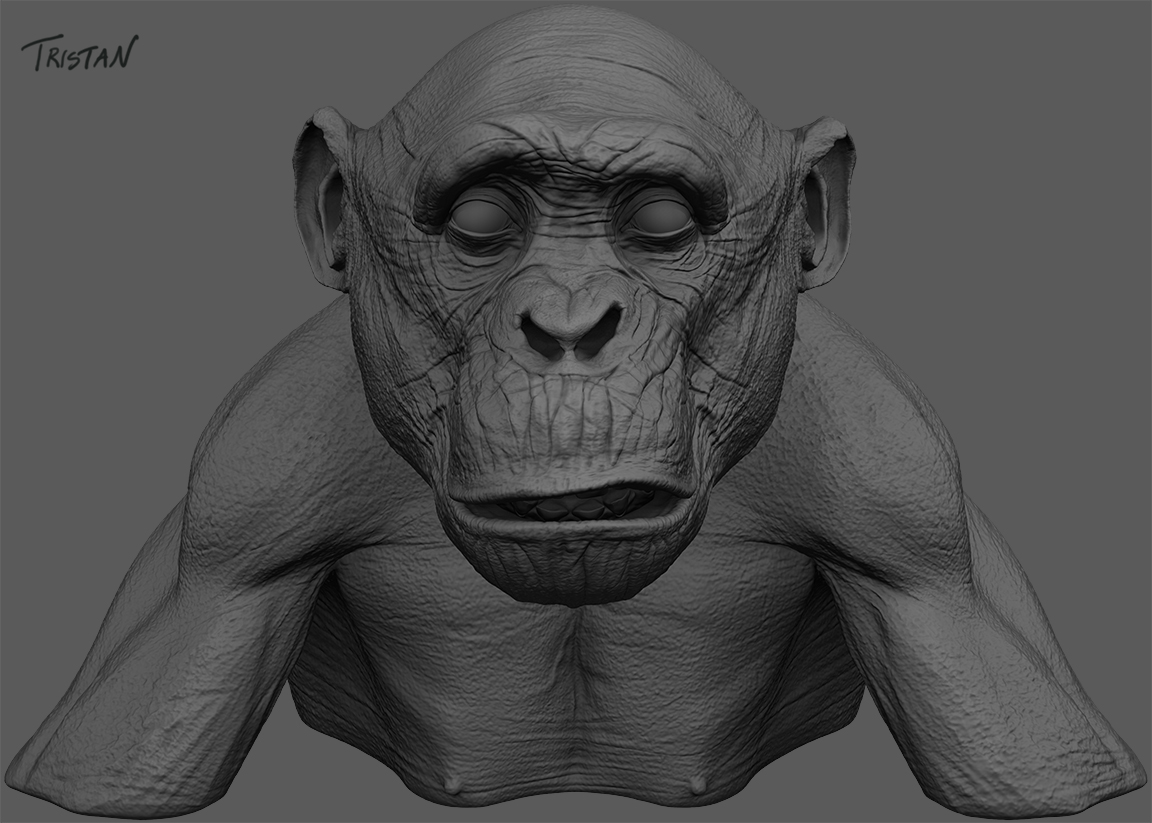Some lifeforms have exoskeletons. Thinks for example insects crabs, lobsters… Other mammals have a thick. leathery skin.
So to me, this creature is believable.
And I like and the colours and the design. Very natural.
Some lifeforms have exoskeletons. Thinks for example insects crabs, lobsters… Other mammals have a thick. leathery skin.
So to me, this creature is believable.
And I like and the colours and the design. Very natural.
it’s sure is a odd and alien design. i like it.
looking forward for more.
-r
Hey guys. Great comments. Thank you all.
For me, any speculative anatomical concept that gets people thinking about it is successful.
As a sculptor (traditional and digital), I say form is the most important element of any creature/character. great surface detail on something that is poorly designed is just bad concept work. Bad art.
As a professional, I have taught sculpture classes using live models with an emphasis on anatomical observation. I have also been a concept sculptor working on resolving the musculature changes in dinosaur characters – and beyond that over the years I have designed working digital models and practical effects creatures of all stripes.
Creating the underlying form of a creature, which suggests how it might move or live or even perhaps the type of environment that gave it life is the fun of this sort of artwork. Some people will not always like what one does. Some will not agree with one’s creative choices, but most respond positively and that’s always great to hear.
First off, let me say I like the piece in question, and I think it’s a very interesting creature. I am sympathetic, however, to the point of view that some of its anatomy looks functionally implausible. I personally wouldn’t have chosen to criticize this particular piece on that basis (though I wouldn’t have any idea how to animate it), but I do think it’s a valid concern when rendering fantastic creatures in an otherwise realistic fashion, as opposed to more abstract or conceptual work where reality is obviously being subverted.
Well, yes and no. Aliens are still subject to the same physical laws we are. In order for realistic speculative art to look convincing, it has to look functionally sound–as if it could exist in our physical universe. A joint that doesn’t look like it could bend correctly, or legs that look too fragile to support a large physical mass, can still be “wrong” even though the subject is purely imaginary.
Take dragons for instance. Dragons are imaginary, but the most convincing or realistic dragons you see rendered are ones that base their anatomy on recognizable real life creatures like dinosaurs, reptiles, birds, bats, etc. Speculative humanoid anatomy is the same way. It’s elastic–you can stretch it, exaggerate or distort the proportions, but if you fundamentally alter its mechanics too far you can break people’s suspension of disbelief. People will accept exaggerated musculature, extended limbs, and even additional limbs. If you joint it incorrectly, though, in a fashion unrecognizable from any real life biological reference, many people will read it as “wrong”.
This may very well be a failure of human imagination. It may very well be the case that artists never really successfully create a creature that a viewer will accept out of thin air, so much as they just scramble pieces around from other recognizable creatures. Unfortunately, artists are communicators of ideas, not reality. If something looks wrong to people, then you’re not successfully communicating your idea. If something looks “wrong”, even for logical reasons, then it’s wrong. If you have to verbally explain why something is right, it’s still wrong.
Again, not saying that is the case here necessarily, but this is a subject I do a lot of thinking about.
Hi Spyndel. Good comment.
Look, everyone is going to perceive these sorts of things differently. To me, this character has believable alien anatomy. I don’t worry about how it would be animated as luckily, I don’t have to do that, but if push comes to shove I expect it could be done.
Also consider how specialized all anatomy is, and that’s just the anatomy we know. This evening a praying mantis was on my deck and I watched it for a bit. It has very interesting anatomy and all designed to do what it needs to do. very different from many other insects that actually share the same environment as it does. His anatomy would be useless in any environment other that the very specific parts of the world it inhabits. If a concept artist designed a fish and showed it to people who knew nothing of water or weightlessness, etc… I’m tired right now but I think you see where I’m headed.
Alien appreciation doesn’t necessitate the suspension of all disbelief, but physics on other worlds or other dimensions will be different than our own.
That said, to me this guy works. Others will agree or disagree but that’s just how life is.
Again, thank you for the intelligent commentary and criticism. It’s nice to hear how other artists think about these sorts of things.
T
I really love the armour and the leathery texture mate. Great combo and cool render.
Sorry for blathering on at length, but as I said it’s a subject I think a lot about.
I’ve looked through your gallery, and you’re clearly a skilled artist who enjoys pushing the limits of conventional design, and I think that’s great. I think choosing to work with a realistic style in a photorealistic medium comes with a different set of burdens than others though, and those limits you push at will sometimes come into conflict with your chosen medium. It’s likely nobody would have even blinked at this had it been a painterly 2d piece or more conceptual work. Those sorts of pieces occupy a different reality. Photo-realism wants to occupy our familiar reality, in which case it is bound by our rules.
I’ll quibble with you here slightly only as one somewhat inferior zbrush artist (me), to another (you)–and no longer as any sort of commentary on the piece in question, but just a general discussion. It’s true that different worlds produce different environments, and different adaptations to those environments, but physics are always the same. That’s why they’re physical laws. And unfortunately, your audience sees everything through the filter of those laws and familiar reality, which is why we have to use familiar touchstones to communicate ideas at a glance.
When I refer to “suspension of disbelief” in a photo-realistic sense, I refer to the viewers ability to accept the subject as a plausible entity that could live and move, or only as the picture of a statue. Obviously a photo-real image of a creature has mass, form, texture–it reads as a real physical object-- but is the viewer seeing it as something that could actually live and move, or are they reading it as a picture of a lifeless statue? People are very flexible, even allowing their minds to assign believable life to cartoon characters, as long as they obey some sort of internal logic. Photo-realism is a different standard though–by choosing to render some elements as rigidly realistic, you’re setting up the expectations of conforming to familiar reality throughout. In my opinion, once a certain threshold of “wrongness” is passed, I’m just staring at an interesting statue that could never be alive.
Thanks for the discussion, and keep up the interesting work!
Spyndel-- you’re not blathering. This is the sort of dialog artists should engage in. This is what we are here for. I like hearing your thoughts.
Three responses. Physical laws. While this doesn’t pertain to my work exactly; while physical laws may (or may not be) the same throughout the universe and in every possible dimension known or unknown, what every one of those laws is is not known. Take dark matter, or sub-atomic particles. They operate in ways unknown before this last century and the understanding of physics (which is not at all agreed to by physicists) had o grow to encompass the new information.
Second, as regards fantastic ideas rendered realistically and what some people or even most people will understand.
I say one, it is the responsibility of the artist to push out on that envelop as the only member of society who possibly can. It is only this pushing that has taken popular sci-fi culture from where it was in the early days (16th,17th,18th century,etc.) to where it is now. Deciding that here we are at the end point of what people can accept is self limiting and in my opinion incorrect.
Lastly, regarding what people can accept for their reality I would para-quote the line from Hamlet about more things in Heaven and Earth than dreamt of in your philosophy…(Horatio’s philosophy – not yours, Spyndel)"
This model started off in early October as a character to use for my Halloween card.
Unfortunately, right after starting it, work ticked up and then some travel and Halloween came and went.
So, now it’s just for fun (or maybe Thanksgiving?).
Some more detailing to do on both characters, then textures and renders, but here it is at the moment.
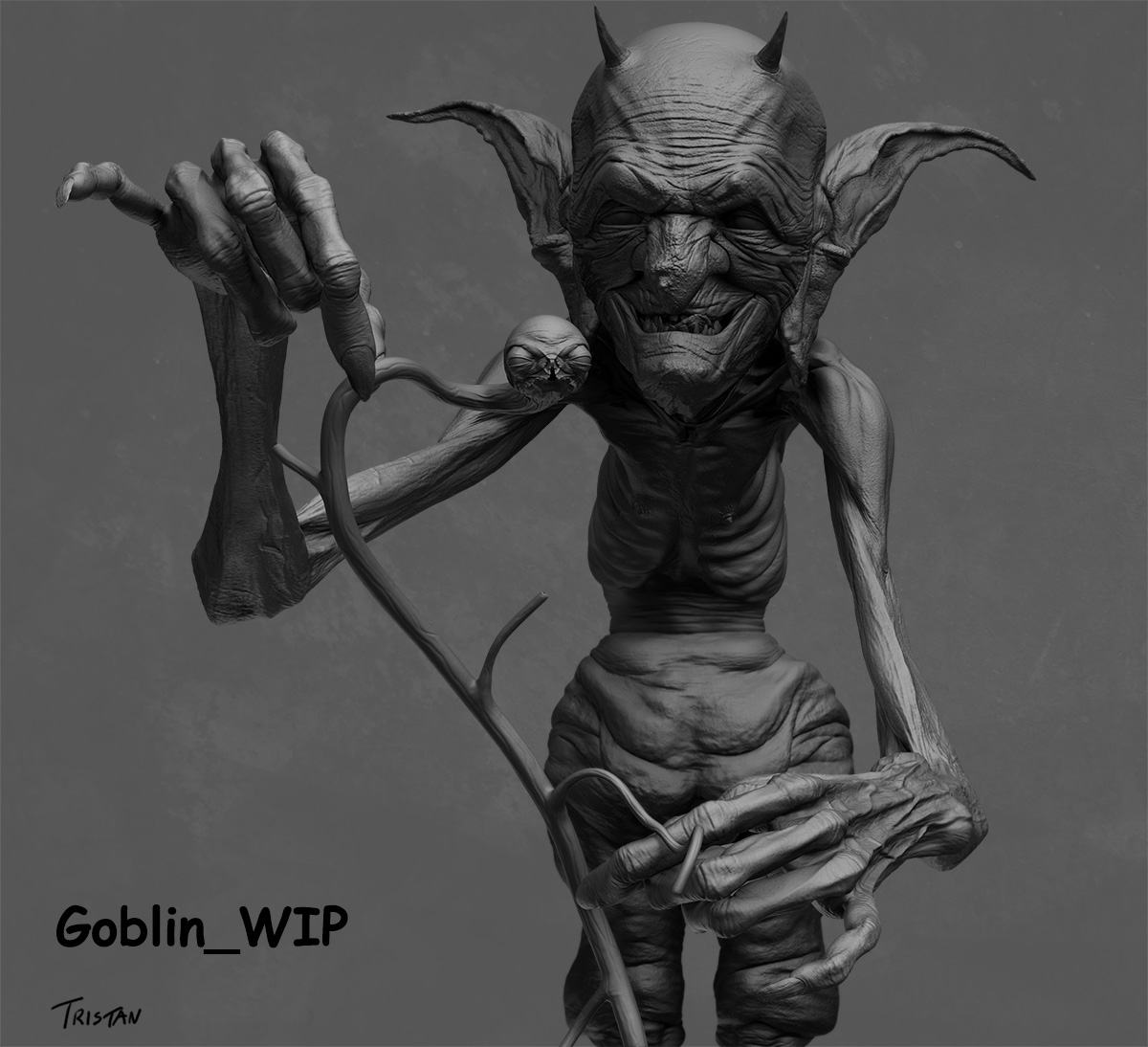
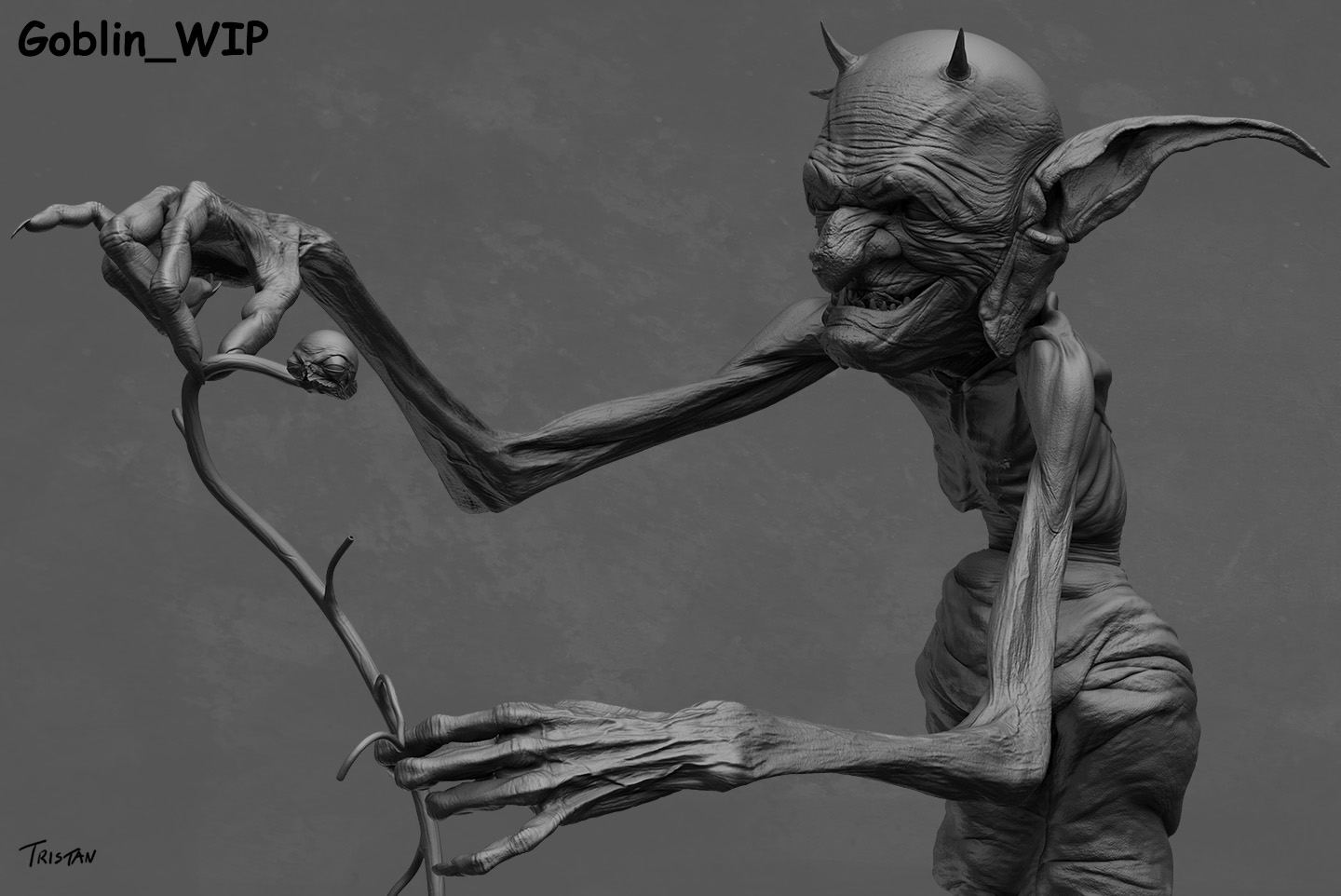
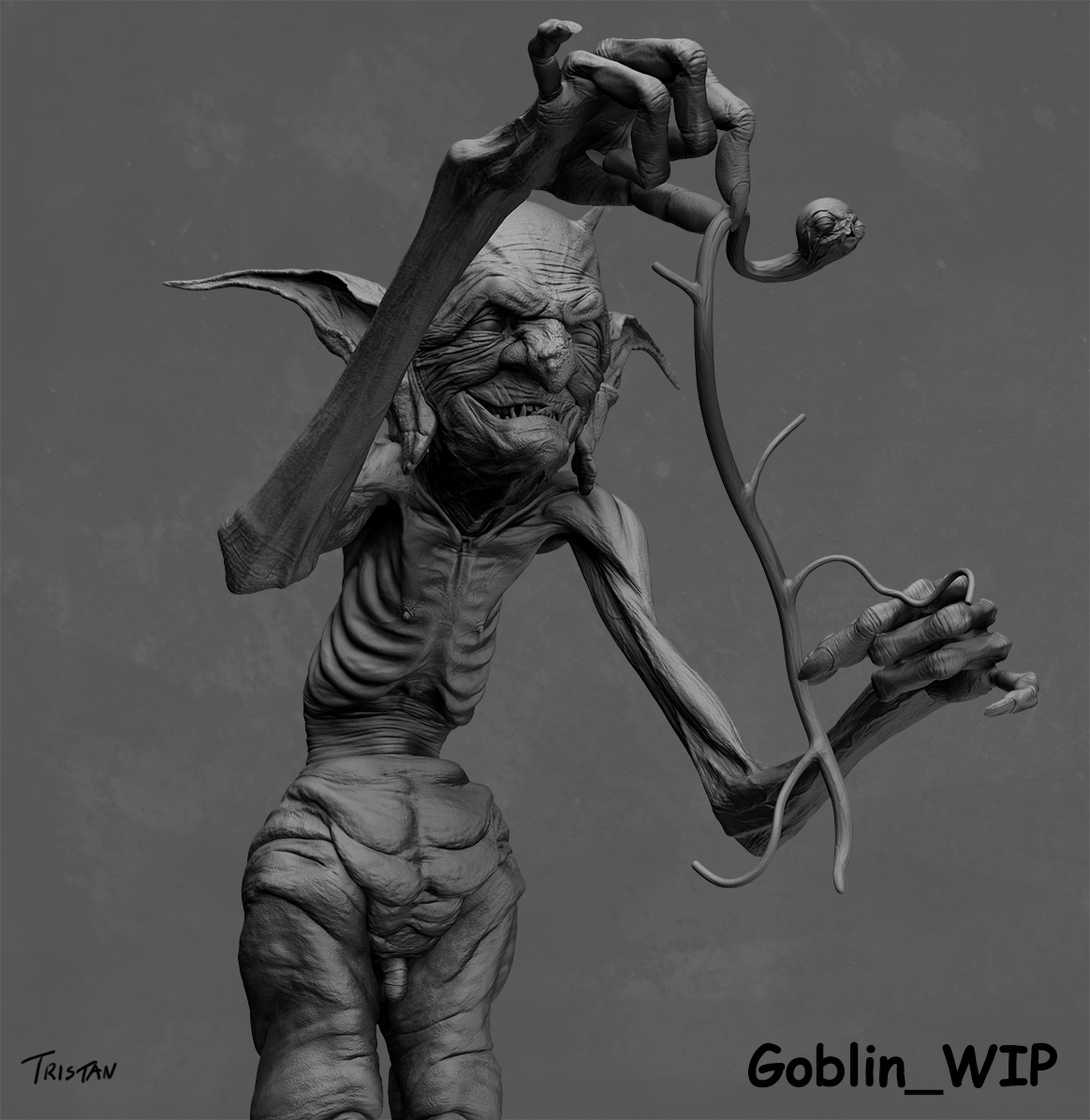



First finished render.
Have some different ones soon.

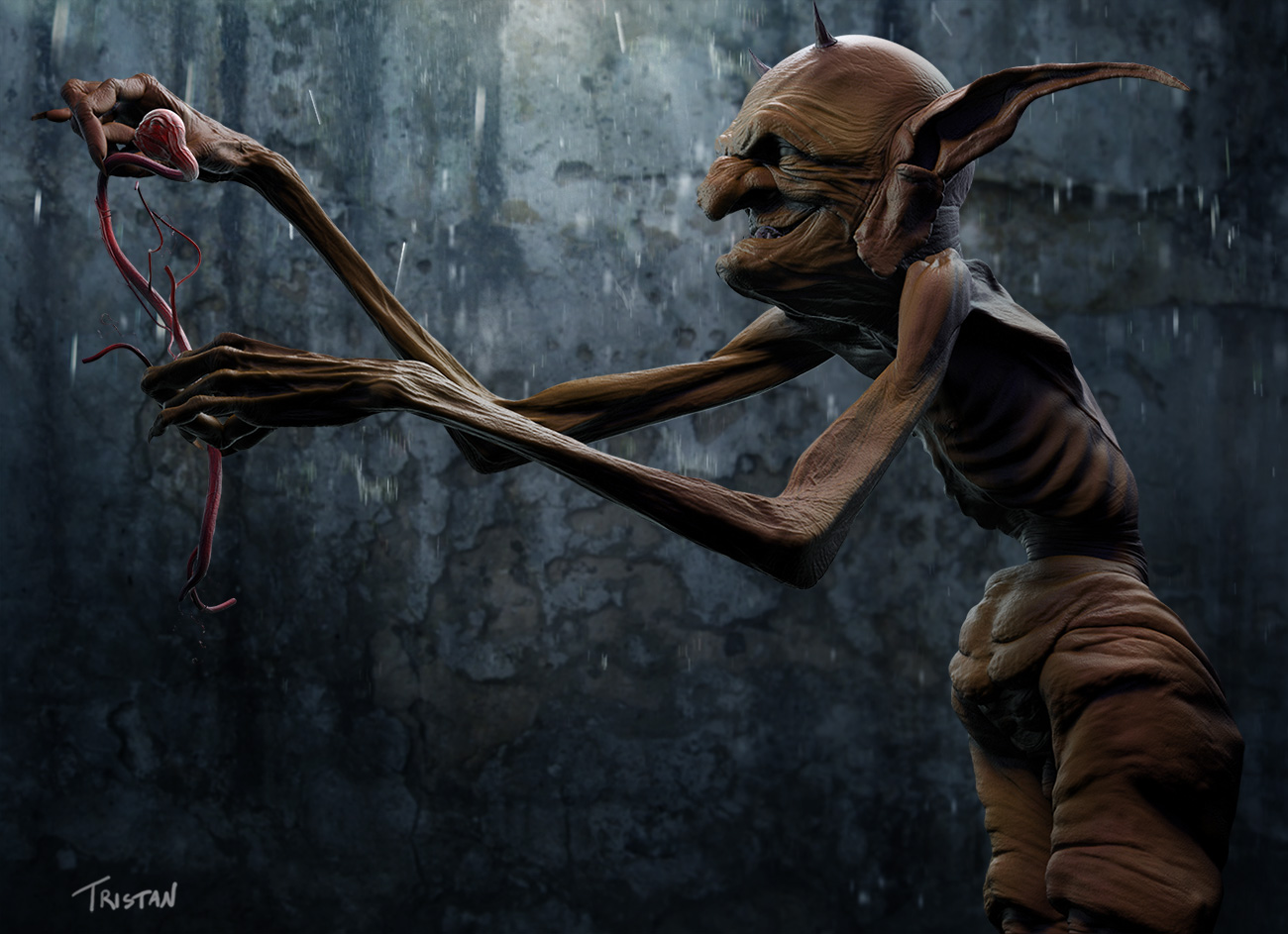

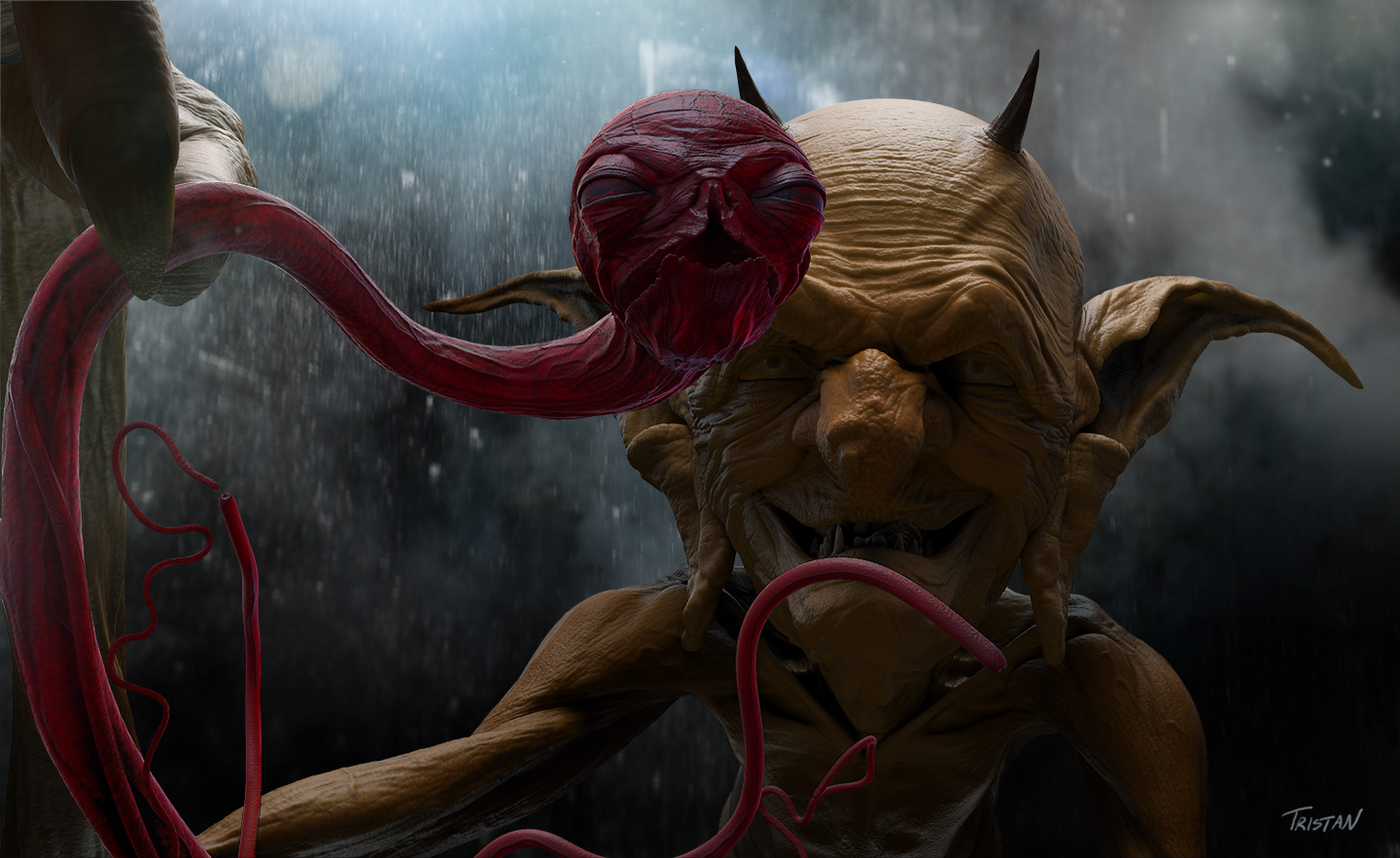
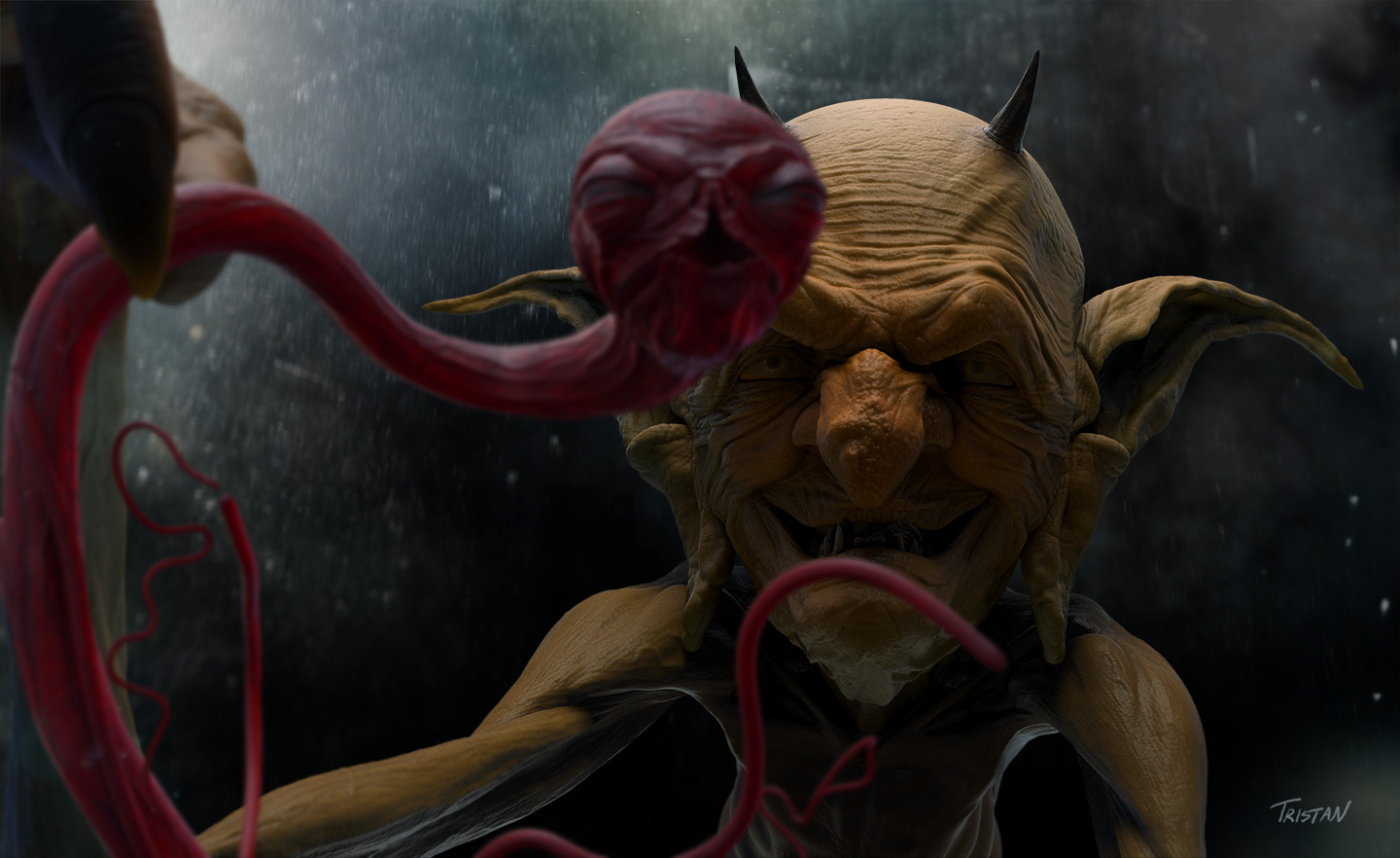


Great work. As we have come to expect from you.
OK, two new renders. I wasn’t happy with some of the others so I did some playing with material settings and modified my light set up. For some reason I just couldn’t get this guy to do what I wanted except in clay renders (which I’ll post later for those interested).
Originally I had made several fibermesh additions to the character but they just didn’t translate well into Keyshot when combined with the translucent materials. Didn’t look like hair to me, so I dropped them. Maybe at some point I’ll do some BPR renders with the fibermesh elements
For now, I think this is as much playing as I can do with this guy. Time to move on.
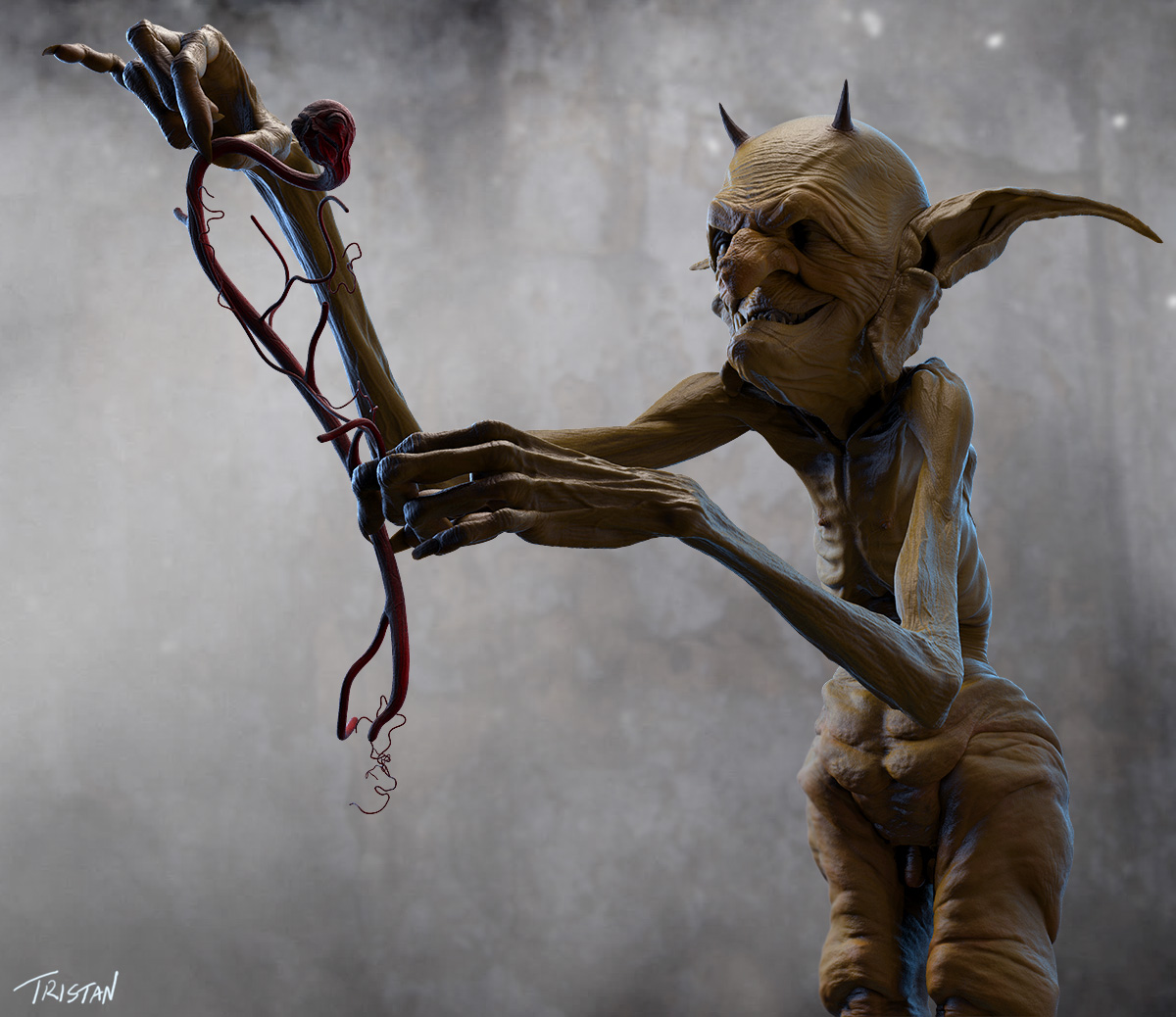
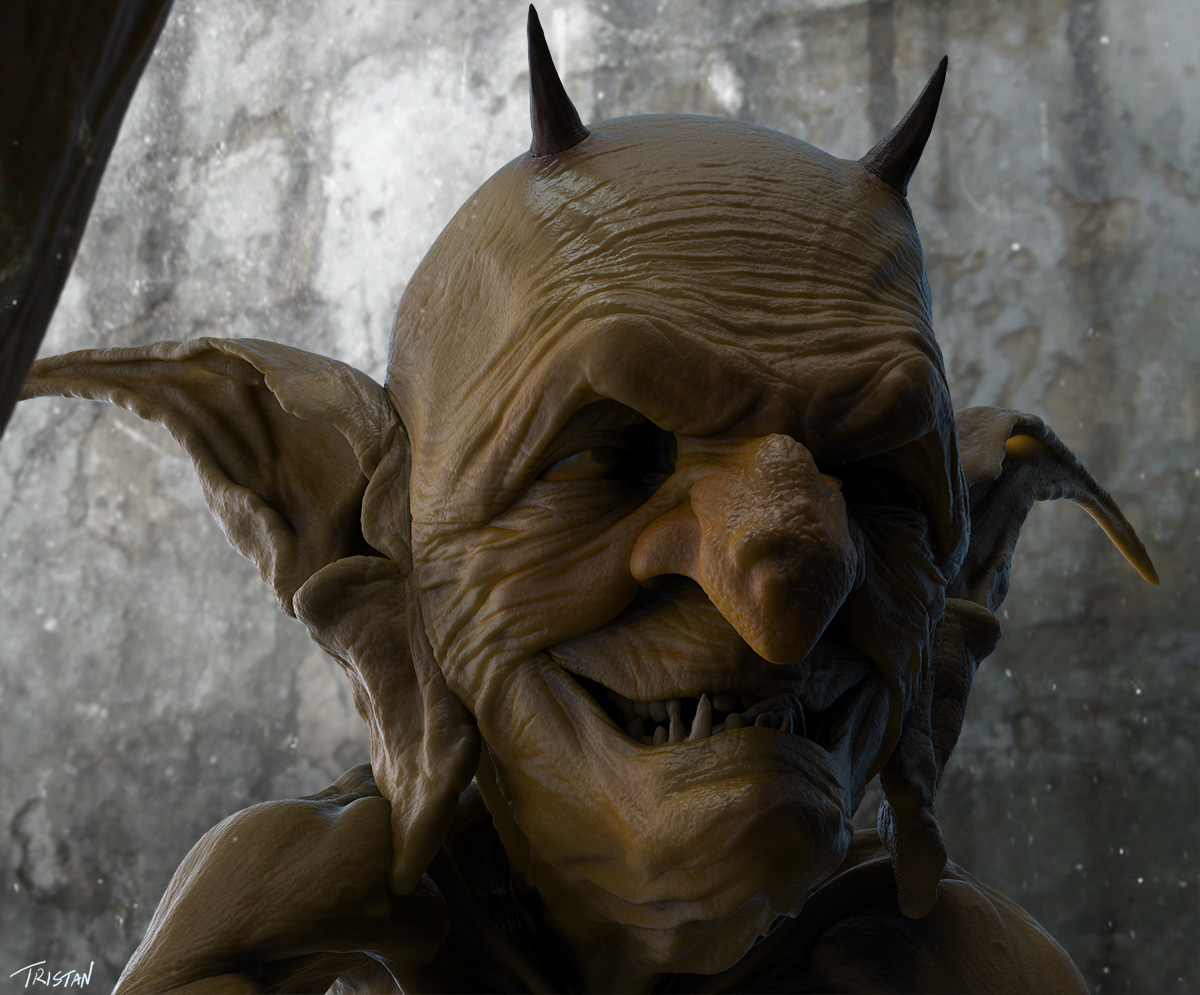


Here’s a Creature I’ve been making in my spare time recently. If I find time, I may pose him. I could also stand to add some surface detail to his garments and maybe some base skin detail.
Crits always welcome.




funny little fella…
i really like the chest and arms.
posing him would really help sell the character.
-r
Yes. Just don’t know I’ll have time. Have other things to work on but trying to get a few decent images of him as he is


 .
.
Meanwhile, here are a few more pics.



Sculpt study I’ve been jabbing at on and off recently. It’s very WIP. More surface detail to add, some anatomy refinement around the area where the clavicle interacts with the acromion process.
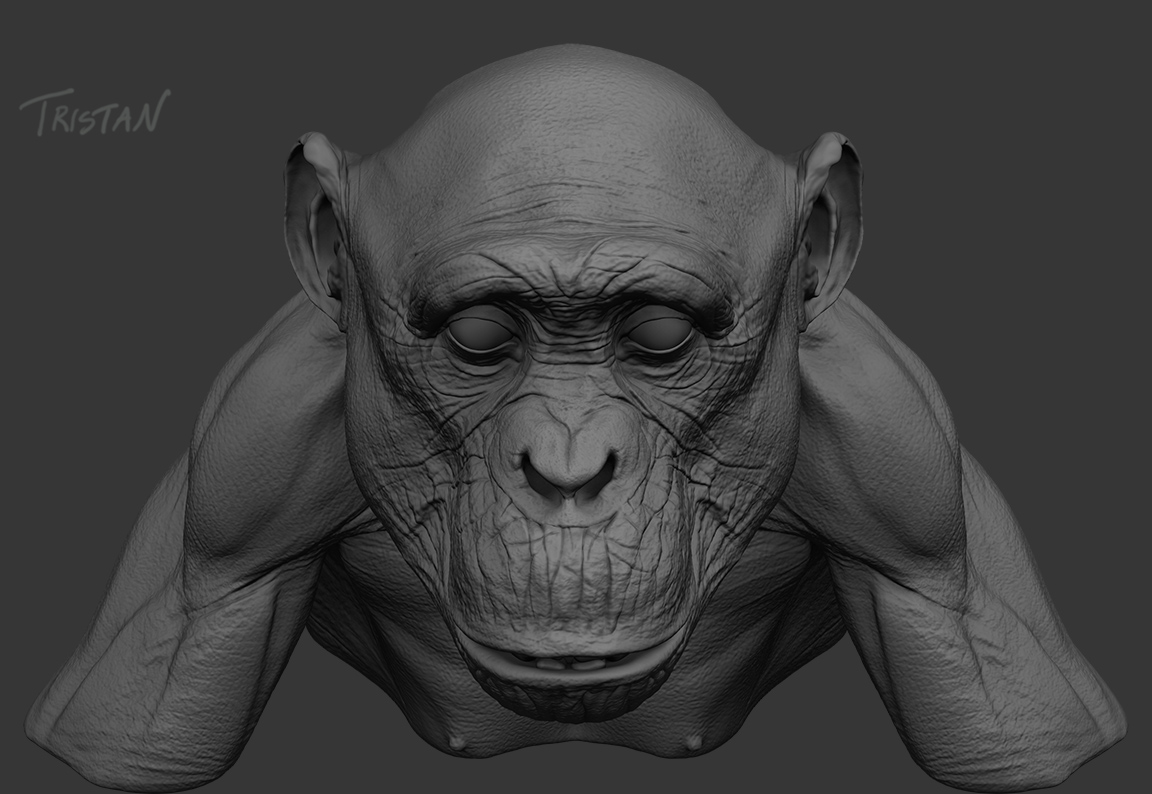
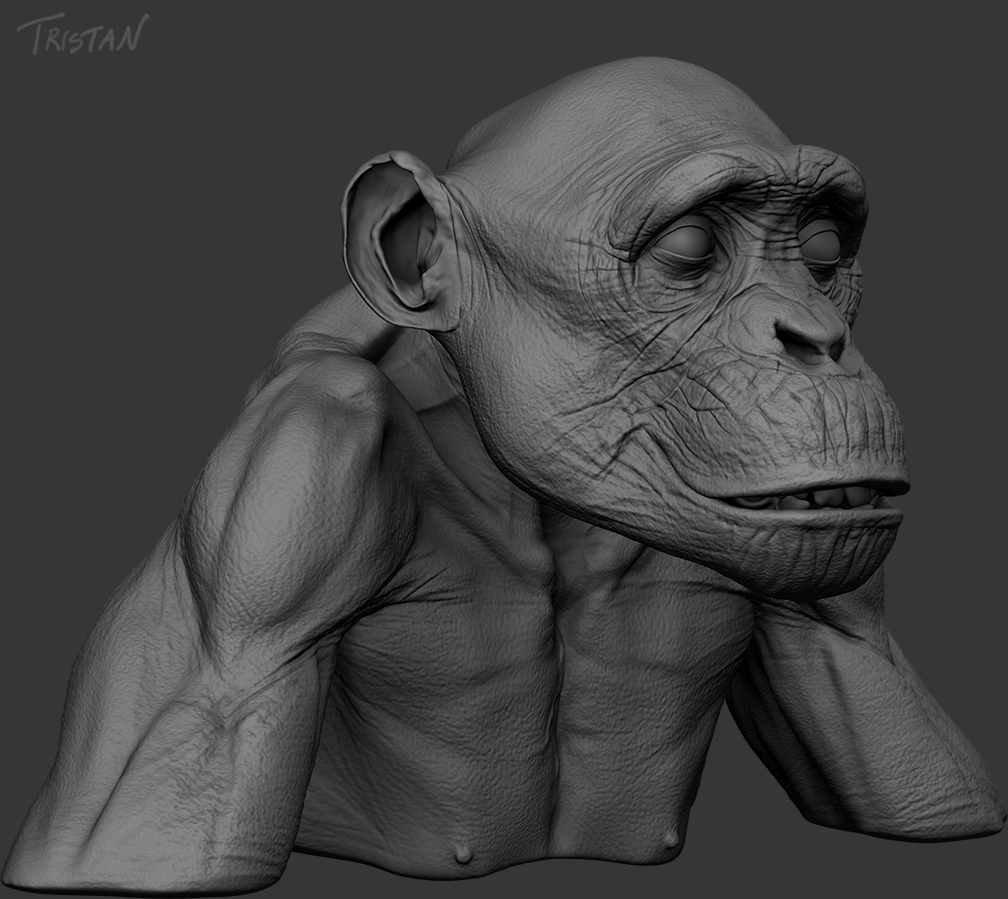
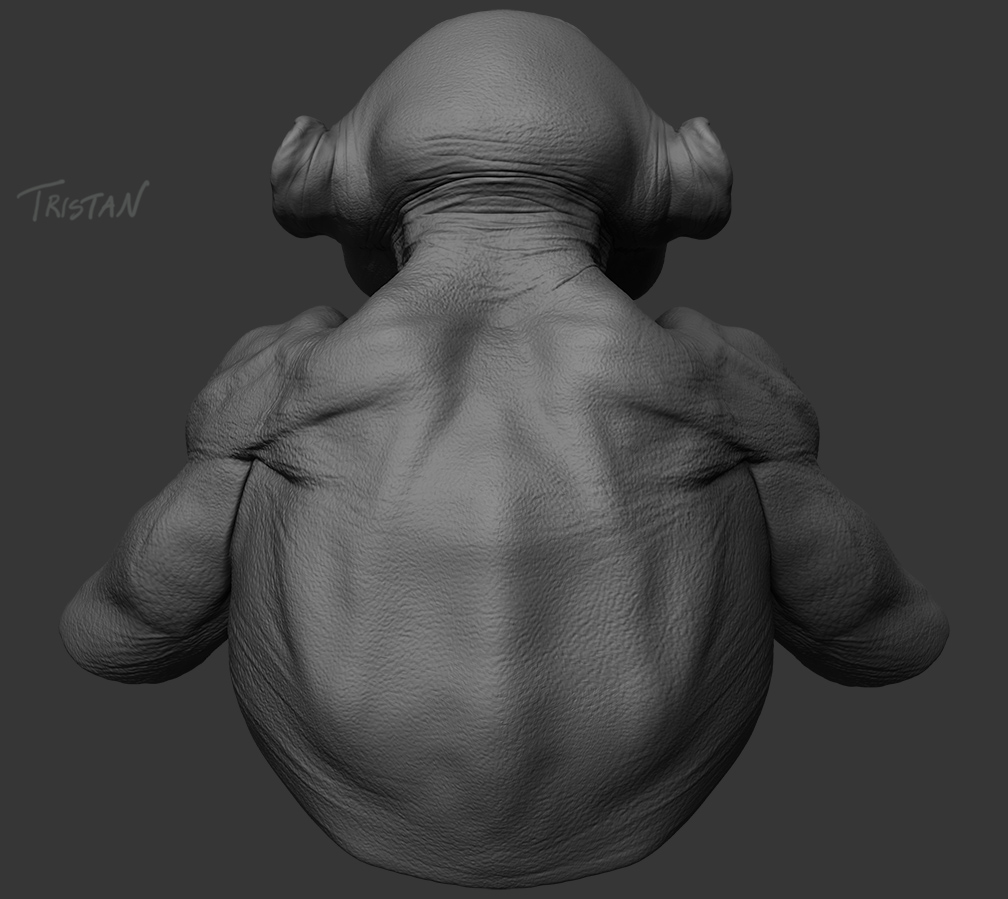

Had a cold the past few days so stuck at home with more time to work on this guy.
Still a WIP.
I added more surface detail. Also, did a good deal of anatomical refining as I felt the shoulder, trap region was too human like. Also, for the face, I broke the symmetry with a slight “pose”.
